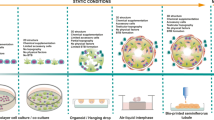Abstract
The importance of obtaining stem cells through alternative methods has increased progressively in the recent years due to the potential role that embryonic stem (ES) cells play in the field of regenerative medicine. In this regard, generation of parthenogenetic blastocysts allows the production of ethic-free ES cells without the need to manipulate normal embryos. Our work was aimed at clarifying whether variations in the method adopted to generate diploid parthenogenetic blastocysts could determine differences in the quality of blastocysts produced. In vitro development of mouse oocytes activated with three protocols, using Sr2+ and cytochalasin for different time, was compared with that of in vivo fertilized embryos. We have evaluated the efficiency of blastocyst formation and analysed the expression pattern of the stemness markers OCT4, CDX2, and NANOG. Our results indicate that the yield of diploid parthenogenotes and the segregation of the stemness marker OCT4 in the developing blastocyst are influenced by the parthenogenetic protocol adopted. Particularly, even if all methods tested allowed the production of blastocysts in vitro, the correct segregation of OCT4 occurred only in blastocysts developed from oocytes concomitantly treated for 4 h with Sr2+ and cytochalasin D. Our results indicate that the protocol employed to develop parthenogenetic blastocysts in vitro affects the quality of cells in the inner cell mass.



Similar content being viewed by others
References
Bos-Mikich A.; Whittingham D. G.; Jones T. J. Meiotic and mitotic Ca2+ oscillations affect cell composition in resulting blastocysts. Dev Biol 182: 172–179; 1997.
Chambers I.; Colby D.; Robertson M.; Nichols J.; Lee S.; Tweedie S.; Smith A. Functional expression cloning of Nanog, a pluripotency sustaining factor in embryonic stem cells. Cell 113: 643–655; 2003.
Chazaud C.; Yamanaka Y.; Pawson T.; Rossant J. Early lineage segregation between epiblast and primitive endoderm in mouse blastocysts through the Grb2-MAPK pathway. Dev Cell 10: 615–624; 2006.
Cuthbertson K. S. Parthenogenetic activation of mouse oocytes in vitro with ethanol and benzyl alcohol. J Exp Zool 226: 311–314; 1983.
Ducibella T.; Huneau D.; Angelichio E.; Zhe Xu; Schultz R. M.; Kopf G. S.; Fissore R.; Madoux S.; Ozil J. P. Egg-to-embryo transition is driven by differential responses to Ca(2+) oscillation number. Dev Biol 250: 280–291; 2002.
Fulton B. P.; Whitthingam D. G. Activation of mammalian oocytes by intracellular injection of calcium. Nature 273: 149–151; 1978.
Green R. M. Can we develop ethically universal embryonic stem-cell lines? Nat Rev Gen 8: 480–485; 2007.
Hogan B.; Beddington R.; Costantini F.; Lacy E. Manipulating the mouse embryo. Cold Spring Harbor Laboratory Press, Cold Spring Harbor, NY; 1994.
Kono T.; Jones K. T.; Mikich A. B.; Whittingham D. G.; Carroll J. A cell cycle-associated change in Ca2+ releasing activity leads to the generation of Ca2+ transients in mouse embryos during the first mitotic division. J Cell Biol 132: 915–923; 1996.
Li X.; Kato Y.; Tsunoda Y. Comparative analysis of development-related gene expression in mouse preimplantation embryos with different developmental potential. Mol Reprod Dev 72: 152–160; 2005.
Loren J.; Lacham-Kaplan O. The employment of strontium to activate mouse oocytes: effects on spermatid-injection outcome. Reproduction 131: 259–267; 2006.
Navarro P.; Liu L.; Trimarchi J.; Ferriani R.; Keefe D. Noninvasive imaging of spindle dynamics during mammalian oocyte activation. Fertil Steril 83: 1197–1205; 2005.
Niwa H.; Miyazaki J.; Smith A. G. Quantitative expression of Oct-3/4 defines differentiation, dedifferentiation or self-renewal of ES cells. Nat Genet 24: 372–376; 2000.
Niwa H.; Toyooka Y.; Shimosato D.; Strumpf D.; Takahashi K.; Yagi R.; Rossant J. Interaction between Oct3/4 and Cdx2 determines trophectoderm differentiation. Cell 123: 917–929; 2005.
O’Neill G. T.; Rolfe L. R.; Kaufman M. H. Developmental potential and chromosome constitution of strontium-induced mouse parthenogenones. Mol Reprod Dev 30: 214–219; 1991.
Rogers N. T.; Halet G.; Piao Y.; Carroll J.; Ko M. S. H.; Swann K. The absence of a Ca2+ signal during mouse egg activation can affect parthenogenetic preimplantation development, gene expression patterns, and blastocyst quality. Reproduction 132: 45–57; 2006.
Rossant J. Stem cells and lineage development in the mammalian blastocyst. Reprod Fertil Dev 19: 111–118; 2007.
Siracusa G.; Whitthingam D. G.; Molinaro M.; Vivarelli E. Parthenogenetic activation of mouse oocytes induced by inhibitors of protein synthesis. J Embryol Exp Morphol 43: 157–166; 1978.
Strumpf D.; Mao C.-A.; Yamanaka Y.; Ralston A.; Chawengsaksophak K.; Beck F.; Rossant J. Cdx2 is required for correct cell fate specification and differentiation of trophectoderm in the mouse blastocyst. Development 132: 2039–2102; 2005.
Whitthingam D. G.; Siracusa G. The involvement of calcium in the activation of mammalian oocytes. Exp Cell Res 113: 311–317; 1978.
Zhu Z. Y.; Chen D. Y.; Li J. S.; Lian L.; Lei L.; Han Z. M.; Sun Q. Y. Rotation of meiotic spindle is controlled by microfilaments in mouse oocytes. Biol Reprod 68: 943–946; 2003.
Acknowledgments
We thank Drs. Maria Paola Paronetto, Massimo De Felici, and Gregorio Siracusa for helpful suggestions during the study. This work was supported by Telethon, Associazione Italiana Ricerca sul Cancro, and Italian Ministry of Education (PRIN 2004 and 2006).
Author information
Authors and Affiliations
Corresponding author
Additional information
Editor: J. Denry Sato
Electronic supplementary material
Below is the link to the electronic supplementary material.
Supplemetary material
(PDF 4416 kb)
Rights and permissions
About this article
Cite this article
Bianchi, E., Geremia, R. & Sette, C. Expression of stemness markers in mouse parthenogenetic-diploid blastocysts is influenced by slight variation of activation protocol adopted. In Vitro Cell.Dev.Biol.-Animal 46, 619–623 (2010). https://doi.org/10.1007/s11626-010-9312-4
Received:
Accepted:
Published:
Issue Date:
DOI: https://doi.org/10.1007/s11626-010-9312-4




